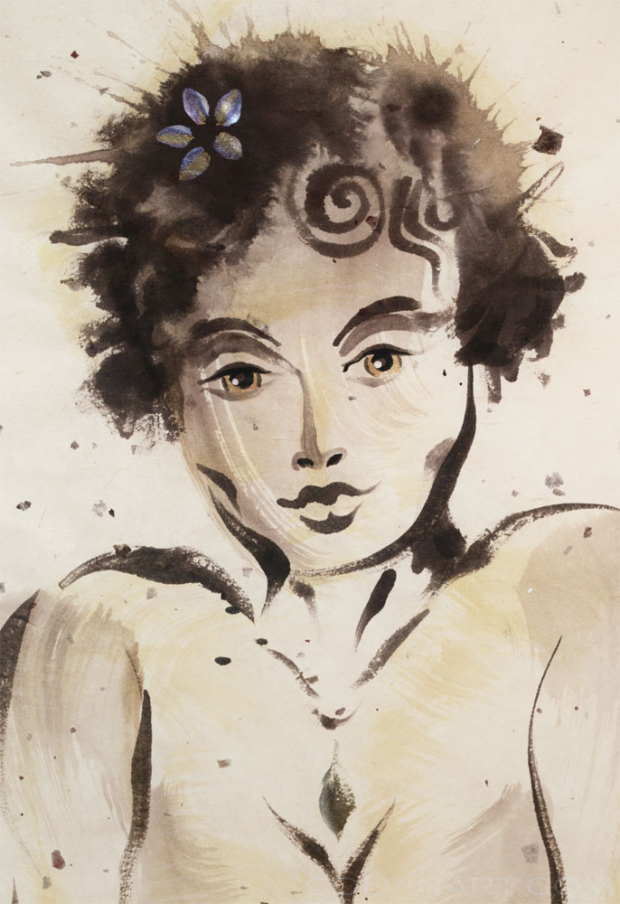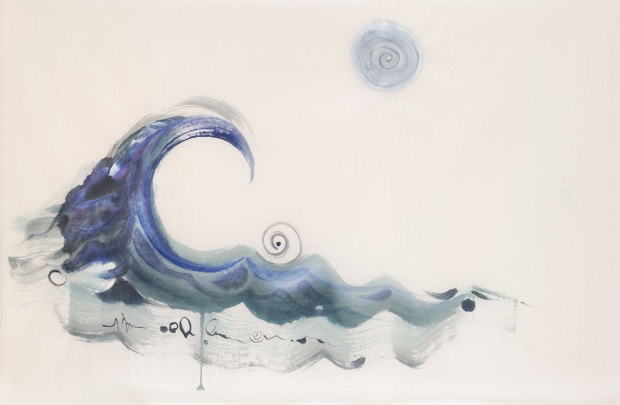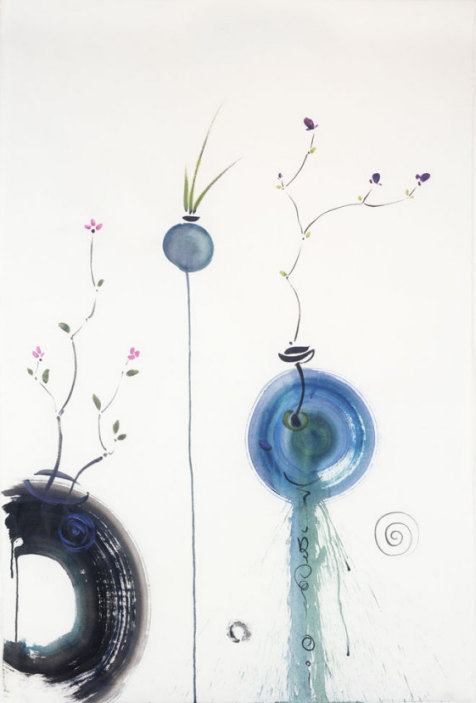Using the camera of our minds
I've added another in depth discussion page sharing my process for a new work-in-progress entitled Kauai Night Dream

Kauai Night Dream, Detail, Size TBD, 2007
Click on the image to go to the page and see the entire piece as it stands now. Check back later to see how it turned out. Like many of my Digital Alchemy Pieces, this one incorporates painting, photography and computer graphics. But Somehow the style seems different to me. Maybe I've morphed into a new genre. Should I call it Bio-Alchemy? This piece excites me because it is starting to capture something I've seen in nature quite often, but have always found impossible to get with a camera. I'm talking about that luminous, almost hallucinogenic quality nightscapes have. Our eyes see remarkably well into the vagary of night, but it's our a vivid brains that do the magic. You see our eyes are getting very little color information at night and loosing most of the shadow detail. But despite this deficit our brains use our past experience and knowledge of what the landscape should look like to fill in the the detail, and sometimes, create a sublime moment. I find this eye/brain relationship truly remarkable. This example goes a long ways towards explaining how the eye/brain organ functions radically different than a modern camera.
How many times have I left the studio late at night, exhausted from working on a deadline project, only to feel instantly revived by the fresh cool air and the transcendent moon back lighting the giant maples and cedars around the house. Such moments are worth at least an hours sleep.
Once I was doing a film in Jamaica, and had a few days to explore the island. this would have been around 1986, and essentially in a pre-digital photographic age. I rented a motorcycle and headed into the Blue Mountains with my still camera. Just after sunset I found myself on a ridge road near the summit and looked westward across the jungle to the sea. My view was shrouded my massive trees and hanging creepers and fireflies glinted in the shadows as the last chromatic ribbon of light faded into the water. I pulled over and took it in with a bitter sweet chord ringing in my heart, for though I was looking at a scene of extreme aesthetic beauty, I knew that it would be pointless to get out my camera and try and shoot it. What I was seeing was beyond the technical limitations of the equipment, of any equipment.
It occurred to me sometime later how to capture this type of image. I was camping at Mono Lake on the desert side of the Sierra Nevada Mountains when scene of similar delicate beauty occured. The full moon rising over the desert lake became partially obscured by cloud; Lunar light turned the diaphanous mist into silver poetry. I realized then that while my camera might not see I could. So I decided to think and observe like a painter, studying the visual mechanics of light and tone blooming before me; Memorizing all that I could about what this moonrise looked like.
And now I find myself living in an age where digital tools allow me to recreate these moments. Combining the skills of photography and painting, I can pull on my magical observations and 'print' what I saw. I now realize that I was able to take that long lost picture in the Blue Mountains of Jamaica after all; I only had to be patient while the scene remained latent in my memory, awaiting the visual renaissance happening in visual art today.
 Thursday, July 5, 2007 at 03:21PM
Thursday, July 5, 2007 at 03:21PM 
 Sumi
Sumi 



